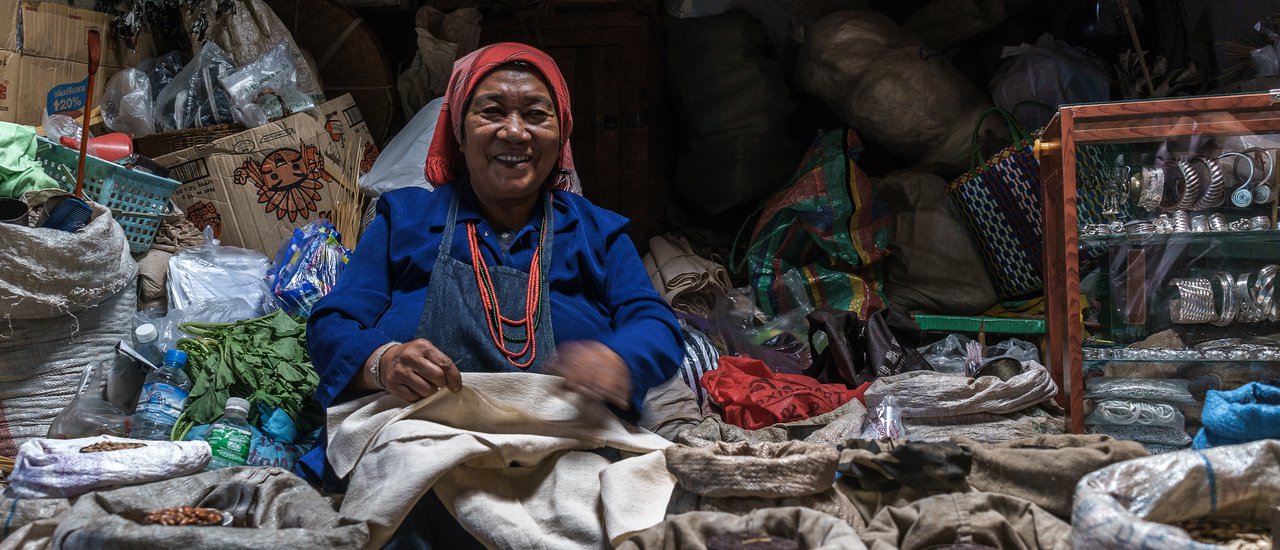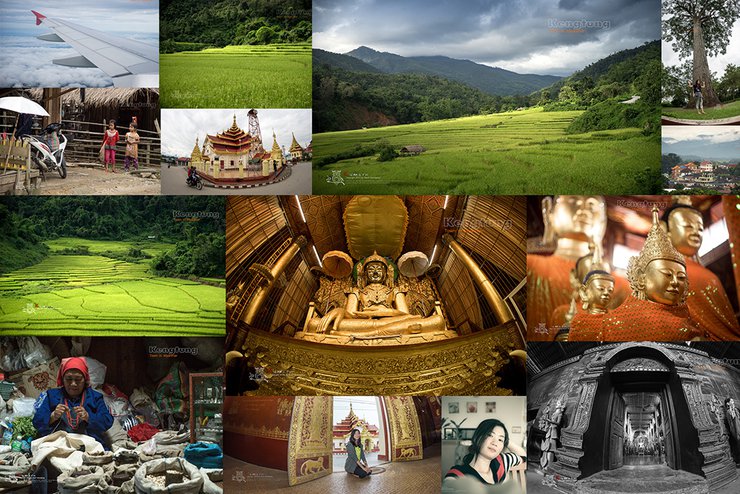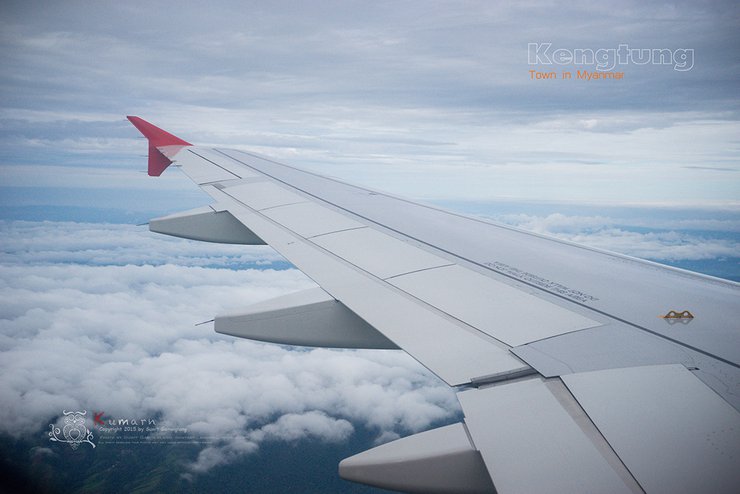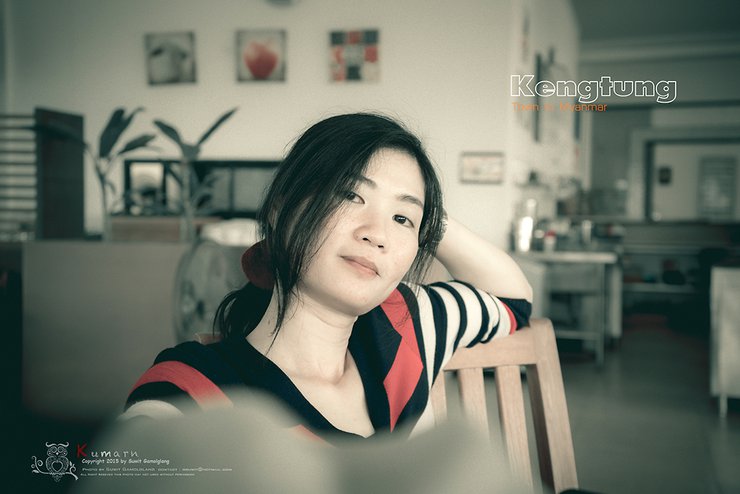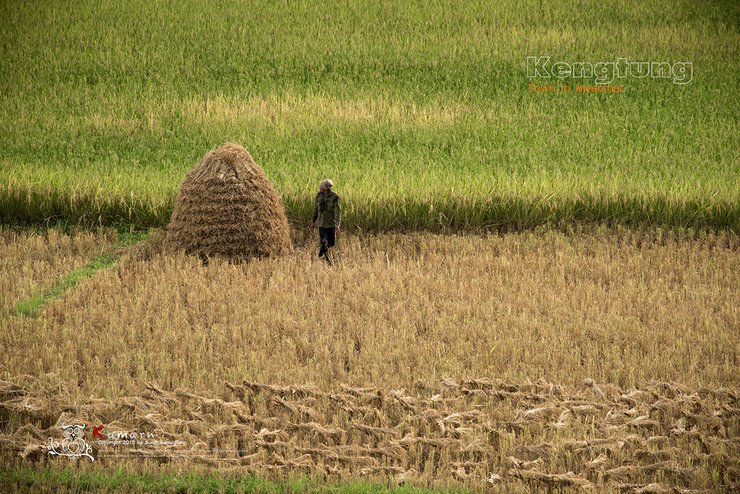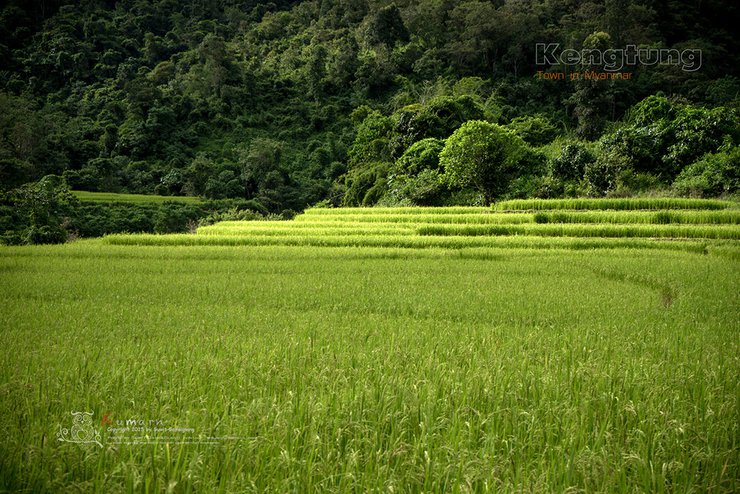Kengtung Town in Myanmar is a province in the Shan State of Burma, located east of the Salween River.
The early history of Kengtung is unclear, but legend has it that a great flood once submerged the city. A hermit named Tung Rishi used his magical powers to drain the water, creating a large lake in the center of the city. This lake, known as Nong Tung, is the origin of the city's name. Kengtung was a prosperous region known for its Buddhism and culture.
At the invitation of our elder brother, we embarked on a photographic expedition to the city of Kengtung. Dissatisfied with the images captured on a previous visit, he coerced us, his younger siblings, into accompanying him (splitting the trip cost, of course). We took leave from work, booked our tickets, and informed our wives (who, to our dismay, insisted on joining us). Laden with our cumbersome luggage, we arrived, breathless, at the once-bustling Don Mueang Airport to await our flight. And so, we set off together, bound for Kengtung, the city of temples.

This trip, I brought all my essential equipment.
Sony A7 Mark II + Lens Kit FE 28-70
The tour group, equipped with their cameras, departed from Don Mueang Airport on a red airline flight to Chiang Rai. They were meeting up with another group of photographers who were already waiting at the airport. The early morning flight meant that I, a resident of Rayong, had to wake my wife up at 3 am to leave home. After going through the usual airport security procedures (my wife was actually flying for the first time!), we arrived at Mae Fah Luang Airport in Chiang Rai in the late morning.


Arriving at the Mae Sai checkpoint by car, it was almost noon. The border pass was processed with only an ID card submitted at the Mae Sai district office. There is a section for issuing border passes, which is very convenient. It is commendable.
After crossing the border, we met with the guide we had arranged in advance. We completed the immigration paperwork with the Burmese side, providing three 1-inch photos and a copy of our ID card. The guide facilitated the process smoothly, allowing us to go shopping until our wallets were empty. We then embarked on our journey to the destination, the city of Kengtung, in a spacious and comfortable van. Although the actual distance is 150 kilometers, be prepared for a 500-kilometer ride (in the same amount of time).


The roadside is adorned with terraced rice fields, alternating between green and yellow hues, resembling the Mae Klang Luang or Pa Pong Pieng of Thailand, or even Sapa in Vietnam (although I haven't been to any of these places, just using my imagination). But trust me, the nickname "Prince of the Rotten Sky" never disappoints. As the rain clouds gather and the sky darkens, a gentle drizzle begins to fall. Seeing this, I decide to increase the alcohol content in my blood and watch the rain fall for a while.





We planned to arrive at our accommodation around four o'clock in the afternoon. However, despite the gloomy weather, we couldn't resist stopping to take pictures and buy souvenirs along the way. We also made stops to use the restroom. We finally reached our destination at six o'clock in the evening, a journey that took five hours to cover 150 kilometers. Just in time to capture the iconic view, but the weather didn't cooperate, and a light rain began to fall. As a result, we were only able to capture a memory of the moment.


After a refreshing night's sleep, the sound of raindrops created a romantic atmosphere for couples, but was rather harsh for singles. Our guide informed us that there would be a fresh market every morning in front of our accommodation (Harry Hotel). As a photographer, I couldn't miss this opportunity. I woke up early and woke my wife to explore the market together (even though it was raining). It was a small market where the people of Kengtung came to find fresh vegetables and meat for their morning meals. I secretly indulged in several dishes but forgot to take pictures (I never seem to capture food on time, haha).



During the first part of the first day in Kengtung, we visited several temples. The guide told us that we could only enter temples that were over 200 years old. I can't remember the names of all the temples we visited, but I do know that the oldest temple was "Wat In".









After a quick visit to the temple, the guide suggested we go shopping before the market closed at noon. We were surprised to hear that the market would close at noon, but it was true. The market, located in the heart of Kengtung, is the only one in the city. The women wasted no time and quickly left us behind to explore the market, leaving us to observe the daily lives of the locals and the women of Kengtung, while we snacked on some delicious food until our stomachs could hold no more.





The afternoon was spent visiting temples, both large and small, as well as the city's signature trees, the royal temple, the temple outside the city, the old community, the rice fields. The car drove around, making me feel sorry for the driver. It rained lightly all day, causing the temperature to drop to 18 degrees, giving me goosebumps. It felt like I needed to use the bathroom. Let's enjoy the photos for a while longer.














The day ended with a return to the popular Nong Tung corner, but luck was not on our side. The village on the side of the central pagoda did not turn on the lights today because they had to be switched on for other villages to use. The electricity in Kengtung is only enough to provide light, which I think is sufficient for daily life. On the third day, the morning of our return, we stopped to take pictures of the city gate and a couple of temples. Then we took the girls shopping for souvenirs again. We hurried back because we didn't want to miss our flight back to Bangkok. It rained lightly all day, and the journey took a long time. On the way, we took the opportunity to take pictures of the corners that we didn't get to take on the way there.






Finally, I would like to express my gratitude to my friends and family who dragged me to the enchanting city of Kengtung. It is said that once you visit Kengtung, you must return three times. I believe this to be true. The city is peaceful and the people are kind. The culture is still very much alive in this "City of a Hundred Temples." Until next time, Kengtung.

Suwit Gamolglang
Tuesday, October 8, 2024 10:27 AM

